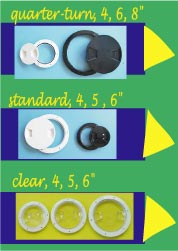|
This Jon Boat is our third boat building project. The boat is progressing well. As the fitting out continues, the hull is becoming stiffer in torsion. Lots more to do yet to complete.
Part 2 shows the sequence involved with completed the hull bottom by fitting the keel and rubbing strip laminations. This part finishes with the hull being turned over and the chines being reinforced with fiberglass tape.
 |
Preparing to glue on the keel and bilge battens. |
 |
Mixing epoxy for the pine keel runner. |
 |
Holding down the keel without using screws. |
 |
Preparing to fit the bilge battens. |
 |
Gluing in the pine bilge battens using weights and stainless steel screws. |
 |
Pine keel and bilge runners fitted. |
 |
Gluing on the Tassie Oak laminations to the keel and bilge battens. |
 |
Trimming the bilge battens. |
 |
Belt sander used on the edges and ends. Lots of dust generated doing this. |
 |
Keel and bilge battens now shaped. |
 |
Hull has now been sealed with an epoxy wood preservative. Later today we will turn the hull over so the inside can be fitted out. |
 |
Here are a couple of our power tools. I use them outside because of the sawdust and shavings generated. The keel and bilge battens being cut from pine flooring strips. |
 |
The pine flooring boards being planed to thickness before cutting in strips. The planer is a very useful tool. |
-s.jpg) |
Turning the hull over with help from our neighbour Bob. I am on the right in my good wood working clothes. Bob arrived at the right time as I was contemplating turning the hull over. Bob is another capable wood worker who had previously built a Mirror sailing dinghy. |
-s.jpg) |
Gluing on the transom reinforcing. |
-s.jpg) |
Glass tape ready for covering the chines. |
-s.jpg) |
More tape ready. |
-s.jpg) |
Glassing the chines in progress with epoxy and tape. |
-s.jpg) |
The chines have now been covered with epoxy and fiberglass tape for added protection when the Jon Boat is in use. |
-s.jpg) |
Now fitting the inner gunwales. |
 |
Gluing on the Tassie Oak transom reinforcing for the outboard motor mount. |
 |
Making up cardboard templates for the seats and buoyancy chambers. |
 |
Cardboard templates in place. The center seat is a pine plank that will be reinforced in the center. |
 |
Gluing in the inner gunwales using Tassie Oak. |
 |
Marking out the 7mm plywood using the cardboard templates. |
 |
Cutting the seat pieces on our outdoor bench with a jigsaw. |
 |
Trial fit of the forward seat. The curved edge is to add a more round shape to this boxy hull. |
 |
The seat bulkheads have been glued in using dabs of Bote-Cote epoxy glue prior to taping the edges. |
Most timber was bought at local hardware stores like Bunnings Harware and Masters Hardware. Tassie (Tasmanian) Oak is used where there is likely to be scrapes and damage when the boat is used. Mainly on the gunnwales, keel and bilge battens.
I worked on fitting the seats yesterday. I cut some plywood from the cardboard templates and then trimmed them to fit. The two bulkheads have been glued in to position them to be taped and faired. Taping the edges will progress in the next week before some extra timber reinforcing will be cut and fitted.
Part 3 will continue with fitting out of the hull interior with the seats and the buoyancy chambers under them.
This work will be a departure from the original plans to give some extra built in safety factors.
I worked on fitting the seats yesterday. I cut some plywood from the cardboard templates and then trimmed them to fit. The two bulkheads have been glued in to position them to be taped and faired. Taping the edges will progress in the next week before some extra timber reinforcing will be cut and fitted.
|


















-s.jpg)
-s.jpg)
-s.jpg)
-s.jpg)
-s.jpg)
-s.jpg)
-s.jpg)

